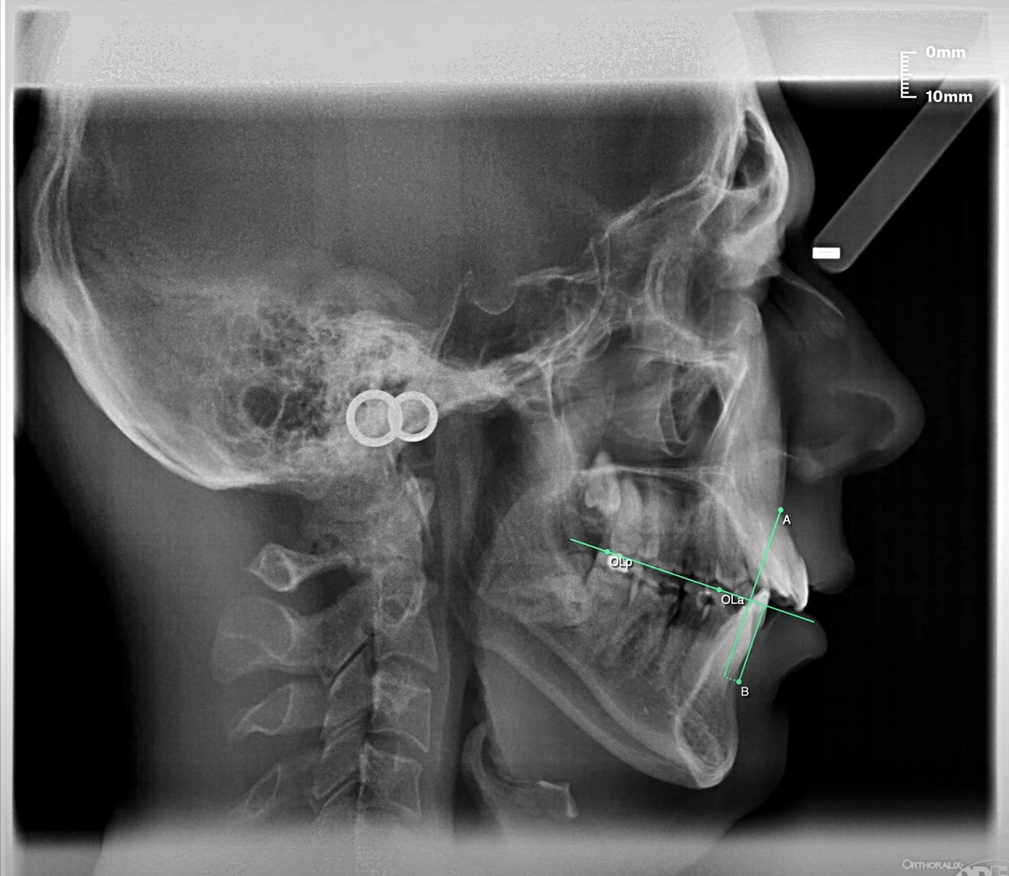
The 1975 Wits Analysis, named after the University of Witwatersrand by Dr. Alex Jacobson, was intended to be a diagnostic aid to measure the severity of anteroposterior jaw disharmony. The analysis used a sample of twenty-one male and twenty-five female adults. It used the least number of skeletal landmarks and yet proved to be adequate enough. The first landmark used is the nasion which is the anteriormost point on the anterior cranial base. The length of the anterior cranial base is represented by the Sella-nasion plane. The anterior limit of the maxillary denture base, point A, is seen as the deepest point of the contour of the maxilla between the anterior nasal spine (ANS) and the alveolus. The deepest curvature of the symphysis of the chin, named as point B, moves horizontally and vertically as the patient grows of age. It was called supramentale by Bjork. It marks the anterior limit of the lower denture base. These points together with the Sella, are connected to form the angles SNA, SNB and ANB. These angles show the horizontal disharmony of the face through the relation of denture bases to cranial reference planes. The ANB angle is used as an indicator of jaw dysplasia influenced by the (1) anteroposterior position of the nasion or of both jaws in the skeletal craniofacial complex, (2) direction of jaw rotation which is either clockwise or counterclockwise in relation to SN plane and (3) clockwise or counterclockwise rotation of the SN plane. It is generally 2 degrees for normal occlusions. A greater value than this angle indicates a Class II malocclusion while smaller to negative measurement shows a Class III malocclusion. A common reference plane for both upper and lower jaws is the occlusal plane which is determined through the area of maximum intercuspation in the molar region.
The extent of jaw disharmony is measured through the anteroposterior jaw relationship. Perpendicular lines are drawn from points A and B upto the occlusal plane of which points of intersection are noted as AO and BO respectively. For the average normal AO to BO in males is 1mm while 0 in females with BO being posterior to AO. In skeletal Class II malocclusion, BO is located more posteriorly to AO with a distance greater than 1mm. While in skeletal Class III cases, BO is located anterior to AO with a negative measurement.
Dr. Jacobson pointed out that the severity of anteroposterior jaw dysplasia is appropriately measured through the maxillomandibular relationship rather than using cranial or extracranial landmarks. The occlusal plane, which is common to both upper and lower jaws is the most appropriate reference plane to relate both jaws. When the occlusal plane is used, the relative direction of growth in relation to cranial or extracranial reference planes becomes irrelevant to the overall assessment of the severity of jaw disharmony.
The Wits appraisal provides a credible reference to the severity of the anteroposterior skeletal disharmony of the jaws. However, the practitioner should still consider factors such as the posterior vertical dimension, ramus width, and symphyseal thickness to predict growth patterns. Hence, the Wits appraisal should be treated as an additional measurement on top of the other cephalometric analyses to help in assessing the degree of jaw disharmony.